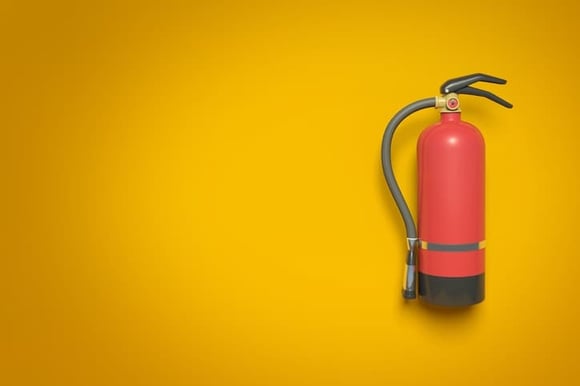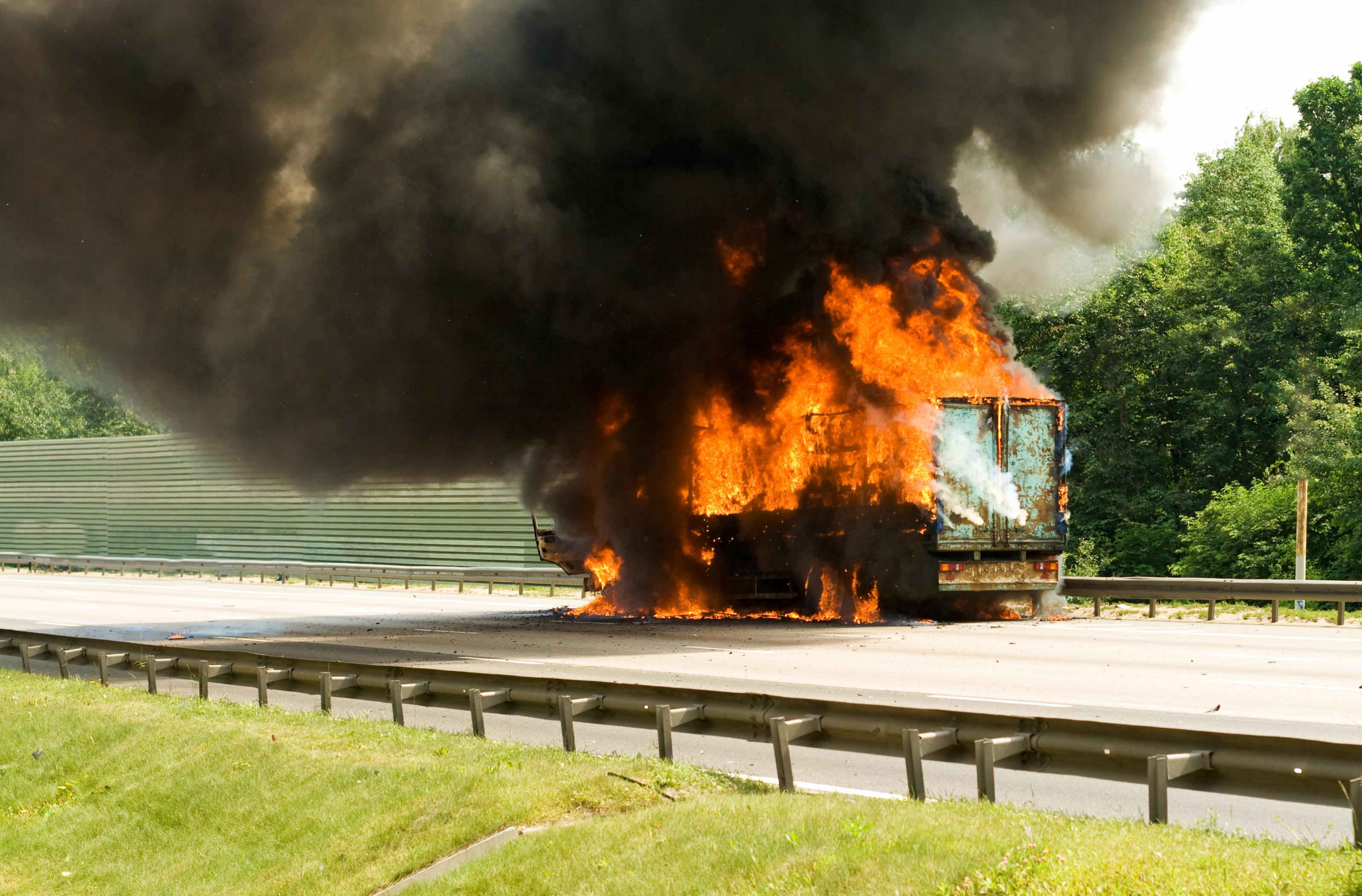Fire Safety for Commercial Motor Vehicles

A fire can be a devastating financial event for a trucking company or a driver. Modern trucks and trailers are manufactured to be as light as possible, which means they are constructed using a variety of potentially dangerous materials which can become extremely hazardous should a fire occur. The dangers of today’s truck fires include extreme heat, very rapid spreading of flames, and potentially toxic fumes.
A fire can seem small at first and easy to handle. Many drivers have been fooled into thinking they have more time than they actually do to put the fire out. However, the speed at which fires spread in and around today’s commercial vehicles can be scary. What may start small can easily engulf the entire vehicle in just a few minutes due to the flammable nature of the components of the truck and trailer as well as the proximity to the flammable fuels used in commercial vehicles and in shops.
Fires can begin from any number of sources such as electrical problems, built-up oil or grease, excess heat stemming from tire or brake problems, cargo problems, cigarette smoking, or other external sources of heat. Remember the fire triangle; what a fire needs to start and grow includes fuel, oxygen, and heat. Removal of any one of these three will serve to put the fire out. However, if a fire gets out of control anything and everything on the truck and trailer will burn to the ground, leaving nothing but the steel rims and frame.
Motor carriers and drivers can prevent fires by ensuring trucks are equipped with the proper type and number of fire extinguishers. This equipment should be regularly inspected by drivers and management. Keep in mind that despite these precautions, a fire may still occur. If it does, here are some steps that can help save the equipment and load:
- Get the unit stopped as soon as possible and call 911.
- Quickly assess the situation. If safe to do so, separate the tractor from the trailer.
- Use the fire extinguisher on the source of the fire. Remember the PASS method: pull pin, aim at base of fire, squeeze trigger, and spray at base of fire.
- If a fire extinguisher is ineffective or emptied, try using available dirt, sand, or water to put the fire out.
- Disconnect battery cables.
Remember that federal regulations require a commercial vehicle be equipped with a UL rated fire extinguisher of 5 B:C, or two 4 B:C extinguishers. Hazmat carriers need to carry at least one 10 B:C extinguisher. These extinguishers need to be inspected at least annually.
For more information on fire safety, please contact the Great West Casualty Company. If you need to request a truck insurance quote, click here or need to find an agent, click here.




